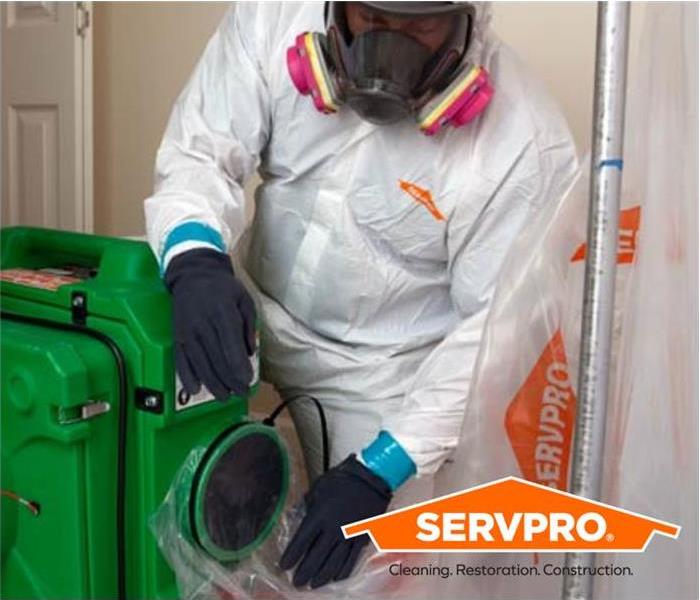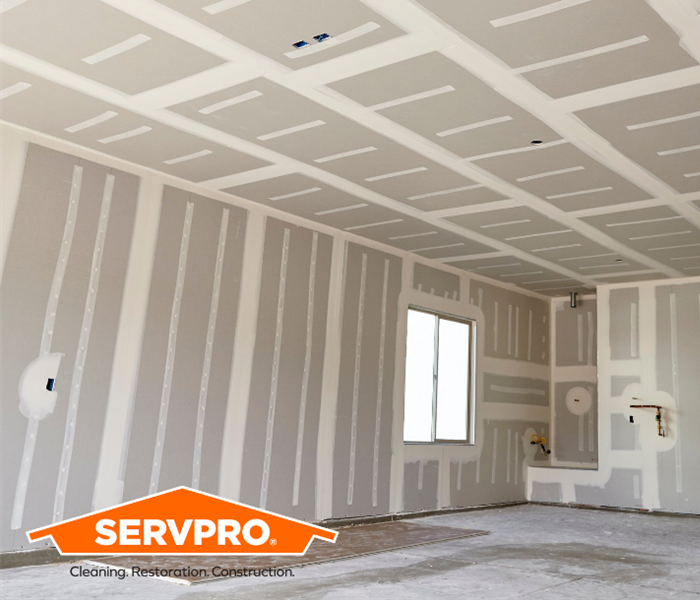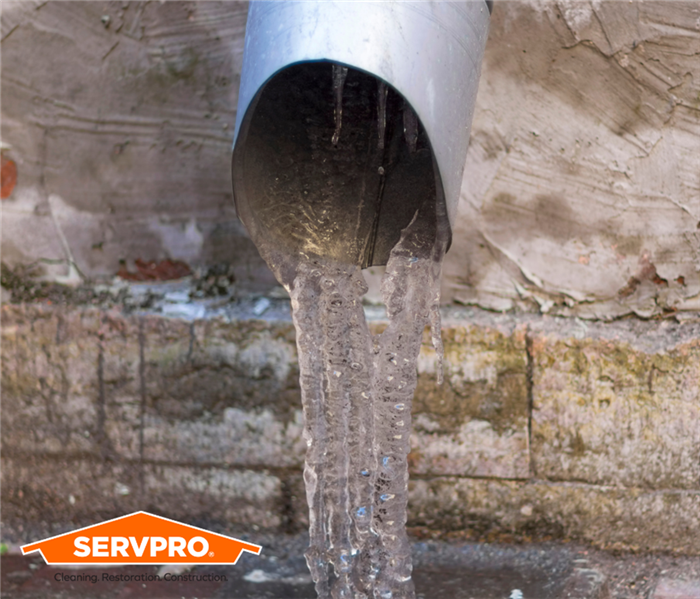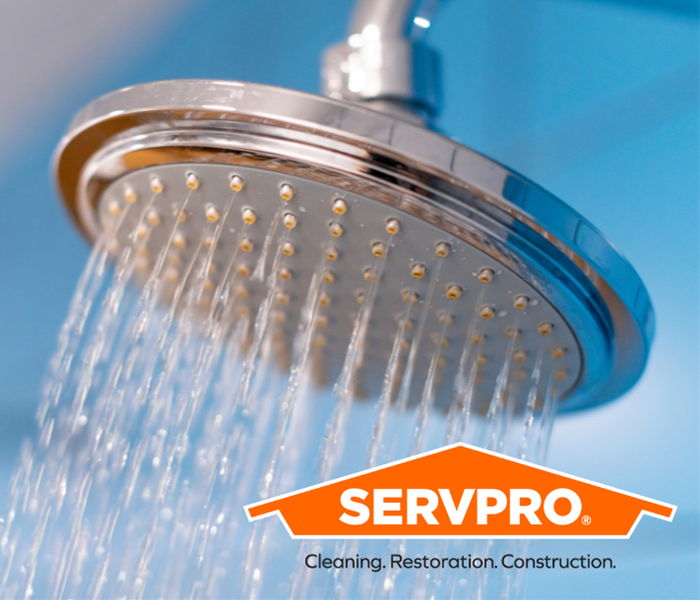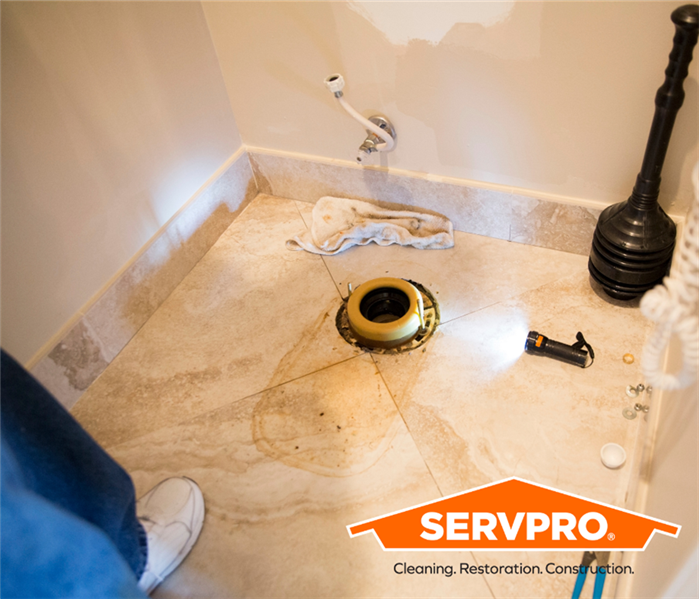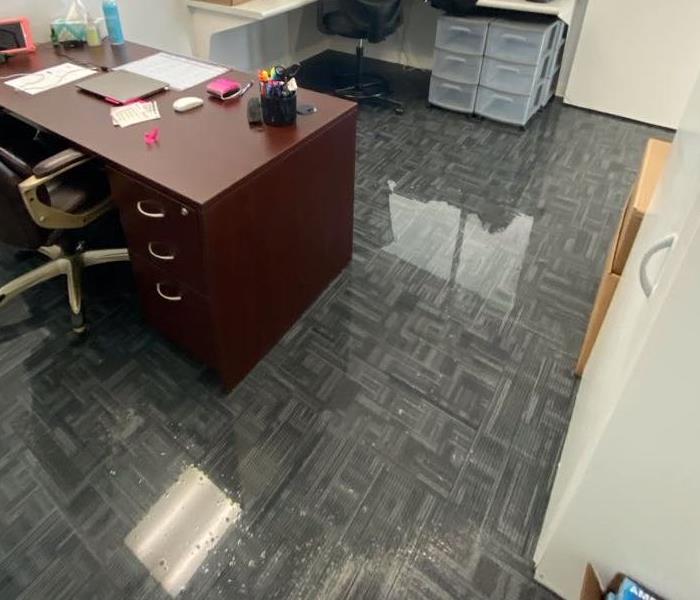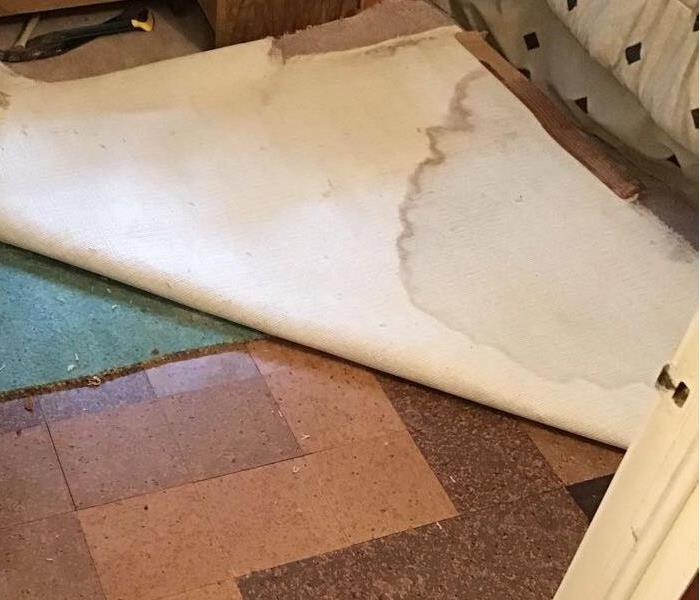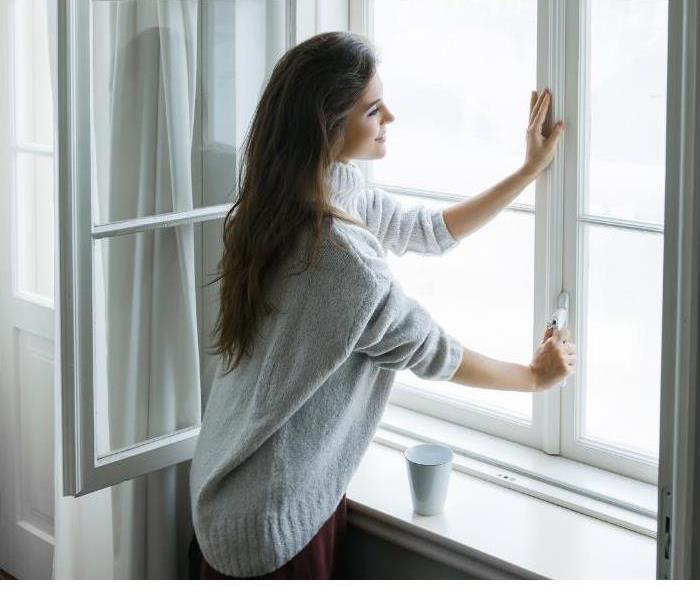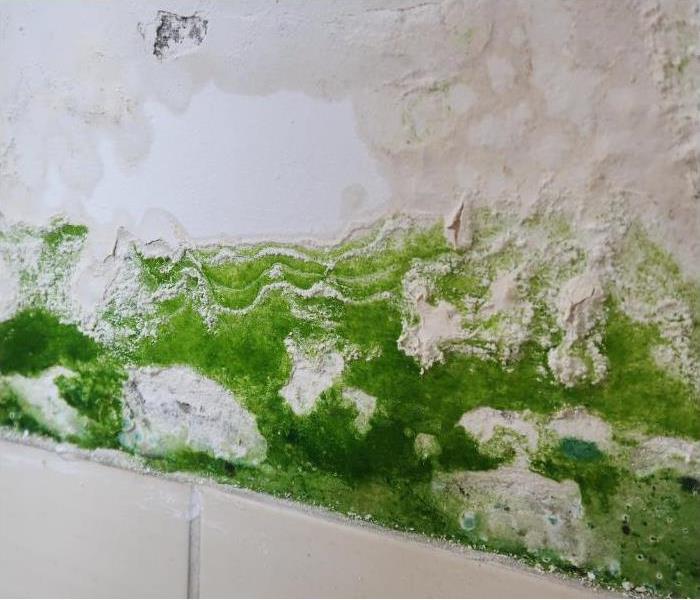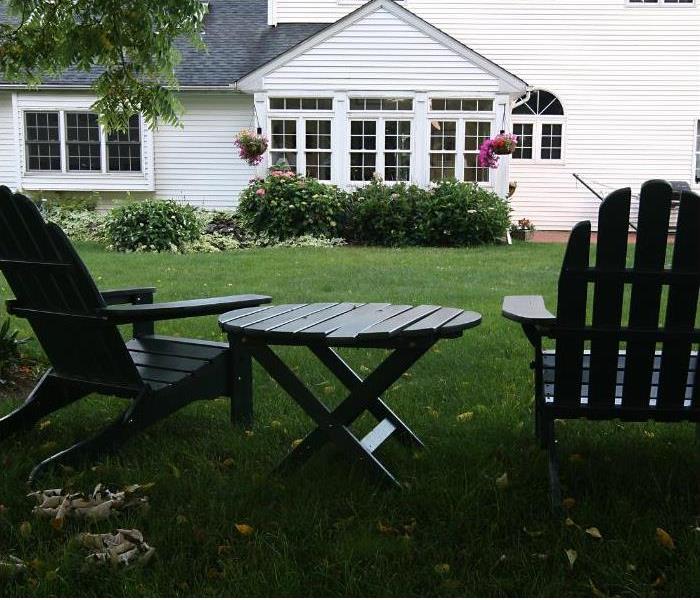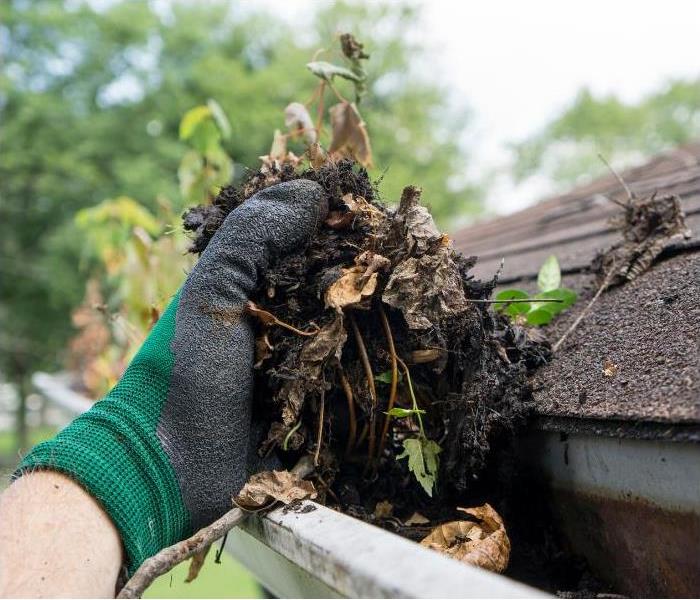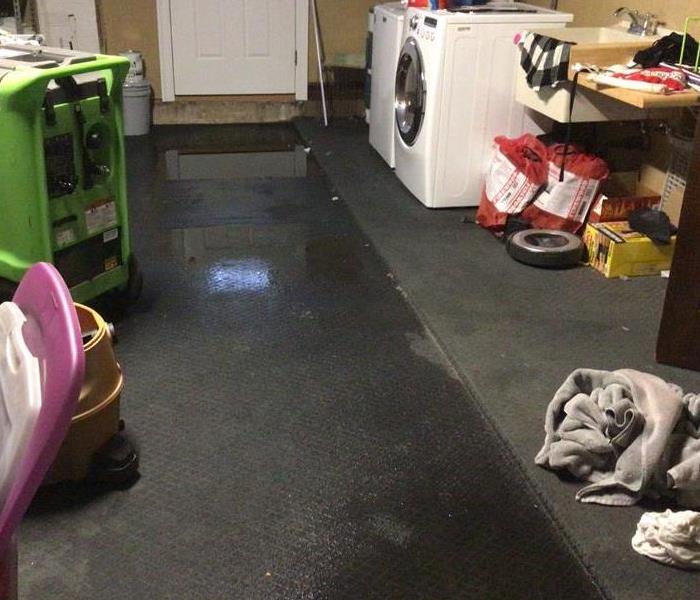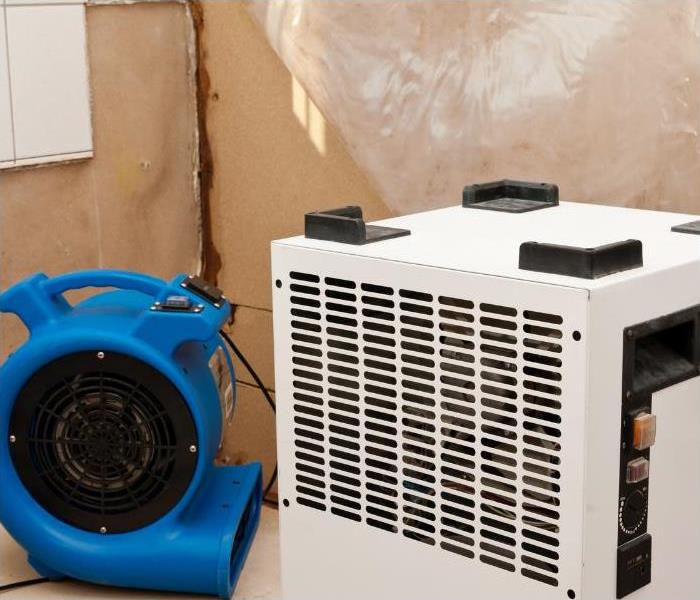Archived Water Damage Blog Posts
Inundation and its aftermath: The immediate impact that leaves no corner untouched.
11/1/2023 (Permalink)
 SERVPRO Van with signs.
SERVPRO Van with signs.
When a storm unleashes its full fury, the result is a powerful inundation that spares no corner of your New Orleans home. The rapid influx of water infiltrates every nook and cranny, leaving behind a trail of destruction. Water enters every crevice from the ground floor to the upper levels, leaving no area untouched.
As the water invades your living spaces, furniture, carpets, and belongings are soaked, bearing witness to the storm's force. Floors become slippery, making movement treacherous. Electrical systems are compromised, raising safety concerns. The immediate aftermath can leave you overwhelmed and confused.
Visible damage is only part of the story. Water seeps into hidden recesses and beneath floorboards, causing additional harm. Structural elements may weaken over time. Immediate action is crucial to prevent further deterioration and minimize long-term consequences. SERVPRO of New Orleans & Mid-City recognizes the urgency of addressing the immediate impact of inundation. Our experienced team arrives swiftly, equipped with the tools and expertise to extract standing water and begin drying.
Call the experts at SERVPRO today and let us handle all of your water and storm remediation needs for your home or office.
Telltale Signs That Water Has Entered Your Walls.
11/1/2023 (Permalink)
 Faster to any disaster.
Faster to any disaster.
Most times, it is easy to tell when you are dealing with water damage that has managed to spill into your wall. Some of the identifiable signs of wall water damage include:
Wallpaper or paint starts peeling
One of the most obvious signs that there is water behind your wall is you notice that your wallpaper or paints have started peeling. This often happens when your sheetrock has absorbed too much water. Other related signs pointing to wall water damage are flaking paints or the opening of a wallpaper at the seams.
Mold growth
Mold typically grows in areas that have excess moisture such as bathrooms, kitchens, or basements. But if you notice mold growing on walls, especially in areas distant from plumbing fixtures, there are chances there is moisture trapped behind your walls.
But unlike peeling or flaking of wallpapers and paint which may take days to show, mold growth takes between 24 and 48 hours to grow on your wall if there is too much moisture.
Warping
Have you noticed warping around your house? It may be time to look around the house for possible water damage to your wall. Oftentimes, warping occurs when there is too much water trapped in the sheetrock behind your walls. That said, warping on the wall is a strong indicator that there is water penetration somewhere in the house.
Musty smell
When excess water or moisture is trapped in materials such as drywall, wood, or plasterboard, it can cause moldy and musty odor. As mentioned earlier, wall cavities with trapped moisture are a breeding ground for mold, which comes with an unpleasant smell.
Therefore, if you perceive a strong odor coming from your walls, that could be a sign that water has penetrated your wall.
Visible stains around the wall
Another prominent sign of water accumulating in the drywall is noticeable staining around the wall. If the stains continue to expand, it is an indicator that there is a hidden plumbing failure in your home.
If you suspect that you have water damage in your home, call the professionals at SERVPRO today!
How Do Experts Clean Up Sewer Damage?
5/5/2022 (Permalink)
How Do Professionals Repair Sewer Damage?
Water leaks in a commercial property can be either uncontaminated, such as a leak that originates from a broken supply line, or contaminated from flooded toilets or a sewer backup.
Sewer cleanup involves contaminated water that may contain potentially dangerous substances such as chemicals or microbes and should be performed by certified professionals. Cleanup and restoration experts will follow several steps in commercial properties that have recently experienced a leak involving contaminated water.
As soon as a commercial property experiences a sewage leak, you should call a plumber and address the source of the problem. Once the leak has stopped, contact a company that specializes in cleaning up sewer damage in commercial properties.
1. Contain the leak and remove water and sewage: Cleanup experts will remove excess water and any traces of solid waste from the affected area to prevent water and sewage damage from spreading or worsening.
2. Clean and disinfect the affected area: Professionals use industrial-grade sewer cleanup equipment and may depend on pump sprayers or foggers to eliminate the presence of dangerous bacteria.
3. Dispose of ruined contents: Any materials that cannot be cleaned and decontaminated should be removed as soon as possible and replaced.
4. Drying and decontamination: Experts will thoroughly dry the affected area and decontaminate items that are capable of being salvaged.
5. Restore the area and contents: Restore the cleaned, disinfected, and dried area and contents to pre-damage conditions.
You can depend on the expertise of a certified sewer cleanup service to ensure that your facility is cleaned, disinfected, and dried in compliance with health and safety standards. If you are dealing with a sewage leak in a commercial property located in New Orleans, LA a sewer damage restoration company can help you ensure that your commercial structure is clean, dry, free of mold, and safe for tenants and visitors.
Preventing Springtime Water Damage in New Orleans
4/28/2022 (Permalink)
We all know the old saying, "April showers bring May flowers." With springtime comes heavy downpours, which can bring unwanted surprises to light on your property like roof leaks or water that comes through your home's foundation. Soggy carpets and dripping ceilings often lead to water damage. Have no fear! Taking the following steps can help prevent water damage in the spring.
Tips to Prevent Springtime Water Damage
- Groom your gutters. Keep the flow flowing! By cleaning your gutters and keeping them damage-free, water will be directed away from your house with downspout extensions.
- Cover up! Using plastic covers around window wells can keep rain from seeping in.
- Show your roof some love. Give your roof some much-needed TLC by replacing missing singles, any damage from storms or weather, and keep flashing sealed. We promise it's worth the effort!
- Be an Einstein landscaper. When putting decoration or landscaping around your home, make sure to slope the ground away from your foundation. This will help prevent water from pooling and causing future water damage issues.
- It's all about the foundation. By repairing cracks and holes in your home's foundation as soon as they are found, you can keep the water away and minimize your odds of water damage!
Here at SERVPRO of New Orleans Uptown & Mid-City, we know that water damage can be a hassle. If you follow the above tips, you might just save yourself from seeing our bright green vans. Whether you use our tips or not, water damage can still happen. That's where we come in!
Give us a call at (504) 468-3047 at any hour of the day! We've got technicians at the ready to help you in your time of need.
Why Is Drywall Removed After a Water Loss?
1/13/2022 (Permalink)
Why does drywall need to be removed and not dried after a water loss?
In most cases, drywall can be dried within 3 to 5 days when drying equipment is placed by a restoration company. However, in some cases, the drywall will require removal due to certain circumstances during water damage.
- If drywall is affected by "grey or black water" that carries contaminates- The drywall will have to be removed and replaced. Examples of this type of water can be found here.
- If drywall has wet insulation in the wall cavities, the drywall and insulation will have to be removed and replaced.
- If drywall has double layers, the Drywall's layers will have to be removed and replaced.
- If drywall was not professionally dried and secondary damages occurred- The drywall will have to be removed and replaced.
Suffering from a water loss is never easy, but we are here to help minimize the impact it has on your family. Give us a call 24/7 to see how we can help mitigate any water damage your home or business may experience!
Fozen Pipe Prevention and Tips | SERVPRO of New Orleans Uptown & Mid-City
1/12/2022 (Permalink)
Although it doesn't typically get below freezing in New Orleans, over the past few winters there have been a few very cold days. The best thing you can do is know how to keep your pipes from freezing before those below freezing temperatures hit. Frozen pipes can be preventable.
Here are some ways to prevent your pipes from freezing.
- Open kitchen and bathroom cabinet doors to allow warmer air to circulate around the plumbing, especially if your sinks are on an exterior wall. (If you have small children, be sure to remove any harmful cleaners and household chemicals.)
- Keep garage doors closed, especially if there are water supply lines in the garage.
- Let the cold water drip from a faucet served by exposed pipes. Running water through the pipe—even at a trickle—helps prevent pipes from freezing.
- Keep the thermostat set to the same temperature day and night. During a cold snap, it is not the time to set back the thermostat at night.
- Seal cracks and openings around windows, doors, and at sill plates, where the house rests on its foundation.
- If you plan to be away during cold weather, leave the heat on in your home, set to a temperature no lower than 55° F.
My Pipes Froze. Now What?
If you turn on a faucet and only a trickle comes out, you may well have a frozen pipe. Turn off the water at the main shutoff valve, which is usually at the water meter or where the main line enters the house. If the water is still running and no pipes have burst, you can take the following steps.
- Turn on the faucet. As you heat the frozen pipe and the ice plug begins to melt, you want the water to be able to flow through. Running water through the pipe, as cold as it is, will help melt ice in the pipe.
- Apply heat to the section of pipe using an electric heating pad wrapped around the pipe, an electric hair dryer, or by wrapping pipes with towels soaked in hot water. As tempting as it may be, do not use a blowtorch, kerosene or propane heater, a charcoal stove, or any device with an open flame; the high heat can damage the pipes or even start a fire.
- Apply heat until the full water pressure is restored. Check all other faucets in your home to see whether you have additional frozen pipes. If one pipe freezes, others may freeze, too.
If you have had damage from frozen pipes or have questions call SERVPRO of New Orleans Uptown & Mid-City anytime at 504-496-0193 and we can answer your questions!
Why Your Shower May Be Leaking | SERVPRO of New Orleans Uptown & Mid-City
1/10/2022 (Permalink)
Due to the large amounts of water running through bathrooms every day, it makes sense that there are often leaks in the bathroom appliances. If you notice excess water pooling or are concerned that there might be water damage or mold in your bathroom, you could be dealing with a shower or bathtub leak.
No matter the reason, it’s important to quickly clean up the water and restore anything that suffered water damage. If left unnoticed, the damage can increase and might eventually form mold.
1. Check the showerhead
Over time, your shower head assembly can wear down and become faulty. If the leaking water is coming from the faucet of your showerhead, try replacing it.
2. Broken Liner Seal
If you are dealing with a shower pan leak, try checking the liner that fits around the pan. Sometimes, these seals are improperly installed and do not protect your floor. If there is a cut or crack in your seal, water can drip into your subfloor and damage your home.
3. Faulty Drain
Often, the drain is responsible for a shower or bathtub leak. Sometimes the pipes beneath the drain can’t drain all the water without leaking. This might require a plumber. Another reason why your drain might leak is that of a faulty seal around the drain. You can remove the drain and apply the plumber’s putty all around the area to prevent further damage.
Our team is available 24/7 to help you and your family with any water loss you may experience.
Why Is My Toilet Leaking? Here Are 8 Possibilities!
1/6/2022 (Permalink)
Water leaking around your toilet can soak into the floor and beyond. It is important to take action if you see a puddle of water around the toilet bowl or even hear a slow drip somewhere behind the wall.
1. Tank is Cracked
While tanks and the bowls are pretty durable, they can get cracks. These often start with a small, hairline crack, but can get bigger. Toilets may get shifted or jarred and can get cracked in the back where you won’t notice them.
2. Worn Washers
There are two large bolts that keep the tank attached to the bowl, and two more that keep the toilet bolted to the floor. If the bolts or washers get stripped, rusted out, break, or wear out, they won’t be able to hold it all together.
3. Pipe Corrosion
There could be corrosion in your pipes because of age, impurities in the water, or heavy metals in your water. Rust will develop in the metallic portions of the toilet because of this corrosion.
Pipe corrosion can often cause a lot of damage because you often don’t know it is even there.
4. Float
The float is the hollow ball that floats on the surface of the water in your toilet tank. It can become unhooked, cracked, or it isn’t lined up properly, the fill valve may run too much, causing a leak. The chain may come off, or if it gets a crack, it can take on water and not work properly.
5. Faulty Supply Line
If there is any kind of damage to supply lines, it can put a major strain on your toilet. Sometimes, if the joints in a supply line come undone and break down, water starts to drip out. The rubber lining in a supply line can also start to leak after several years.
6. Worn-Out Fill Valve
The fill valve on the toilet can also wear down over time. This is often due to mineral deposits, but they can also rust. If enough builds up to warp the fill valve, it can stop working properly, preventing your toilet from shutting off and causing leakage.
7. Stuck or Worn-out Flapper
The flapper is that plug in the bottom of your tank. It releases the water when you flush. If it gets stuck, either open or closed, you have a problem. This can also happen if your handle is stuck.
If the flapper is stuck open, the fill valve will not shut off, so it will just keep running. If the flapper wears out, no longer fits properly, or gets a tear, then it will not be able to regulate the water in the tank.
8. Broken Connections
Your toilet has many different connectors that prevent water leaks. If any of these connections lose their seal, water may end up on your bathroom floor. You can check your toilet’s connections to see if there are any problems before they turn into leaks.
If you find you are dealing with a water loss from any of the above issues, call a plumber to address the leak. Once the leak is fixed SERVPRO of New Orleans Uptown & Mid-City is here to help! We can make sure the area is dry and help prevent further issues like microbial growth!
When is it Safe for Employees to Return to Work After a Flood?
5/4/2021 (Permalink)
It's natural to want to return to work as soon as possible after your business suffers from a costly incident, such as a "black water" flood. After all, you have this big expense to pay off and you're losing money just by not being at the office. No matter how eager you are, you still have to consider your employees' personal safety. Keep the following safety considerations in mind before you send your employees back to your New Orleans Uptown & Mid-City office.
1. Sweep Up Any Physical Debris. The physical damages should be the first task you address during flood cleanup. Strong floodwaters can introduce harmful objects into the office, such as stray nails and glass shards. Make sure to sweep the office floors thoroughly to ensure every hidden danger is taken care of. As a business owner, your employees' personal safety should be your number one priority. Taking the time and effort to thoroughly clean and disinfect your office building following a black waterflood is a non-negotiable task for you. Contact flood remediation experts for assistance during the cleanup process.
2. Clear Out the Flood Water. Both black and gray water floods pose major safety concerns for your employees. Black water is characterized by the presence of harmful biohazards, such as human/animal fecal matter, raw sewage, and dangerous chemicals. You have to make sure you clear out all of the contaminated floodwaters and thoroughly disinfect every exposed surface before you allow your employees to return to the office.
3.Check the Air Quality. It's very possible that the biohazards introduced with the floodwater are now in the air. Make sure to set up fans and other air filtration devices throughout your building to help eliminate harmful agents. As an additional safety measure, you may want to consider keeping these filtration devices running even after your employees come back.
If your business is experiencing a flood, call the professionals at SERVPRO of New Orleans Uptown & Mid-City today!
The Different Types of Flood Water We Work With In New Orleans
4/26/2021 (Permalink)
Category 1: Clean water from a broken pipe or rainwater that has not mixed with contaminants. Saving a carpet damaged by Category 1 water is possible if the carpet has been wet for less than 24-48 hours. Otherwise, the water may “degrade” into Category 2. Professionals can restore both padding and carpet through proper sanitation and remediation procedures.
Category 2: Greywater which is contaminated and can cause sickness if swallowed or if it touches the body. This includes overflow from washing machines or dishwashers, toilet overflows with no solid matter, broken aquariums, sump pump failures, etc. With this type of loss, the padding needs to be replaced, but the carpet can be salvaged. Not treating a Category 2 loss within 24-48 hours will turn into a Category 3.
Category 3: Blackwater that’s highly contaminated with pathogens or other harmful agents and materials. Examples include sewage, toilet backflows, flooding from seawater, rivers, streams, and water from hurricanes, storms, or other weather-related events. Cleaning your flooded carpet is nearly impossible if Category 3 water saturated it.
Every water damage situation is different. So, you cannot know for sure if or when your carpet and pad can be salvaged until you have a professional restoration company inspect the carpeting.
Also, the faster you report the disaster, the lower the costs will be. If you’re dealing with a flooded carpet problem, contact us today!
Leaky Windows? | SERVPRO of New Orleans Uptown & Mid-City
3/16/2021 (Permalink)
What to Do if There Is a Water Leak Around a Window
The natural elements can wear down the integrity of a home. Over time, the homeowner may notice leakage around a window, which can possibly result in wood rot, mold and water damage. The longer the leak is left unaddressed, the more the repairs will cost.
Locate the Problem
Even a slow drip can mean that more water is sitting inside of the wall. Once a homeowner notices moisture trickling from a window when it rains, the first step is to carefully look at the wall around the area to find the source of the leak. However, thanks to gravity, appearances can be deceiving; liquid may pool in one place, but that place is not always the leak's origin.
Two common problem areas are the edge and the rubber seal. The gap between the edge and the surrounding wall is usually sealed with caulk. Eventually, the caulk dries out and begins to peel and chip. Like caulk, the rubber seal situated between the panes and frame can ultimately dry out, creating rips in the rubber.
Gauge the Severity of Damage
Depending on the severity of the damage, the window may need to be replaced. A replacement is usually warranted when decaying or softness is found on nearby surfaces. However, even if the surrounding surfaces seem to be structurally sound, the homeowner should not just re-caulk the gaps without getting an expert's opinion on the full extent of the damage.
SERVPRO® of New Orleans Uptown & Mid-City Can Help!
A specialist at SERVPRO® of New Orleans Uptown & Mid-City can determine whether any ceiling tiles or drywall have sustained damage. After he assesses the situation, the restoration technician will give the homeowner the best remediation option to make the damage disappear. By acting quickly, the homeowner can prevent expensive repairs in the future. SERVPRO® of New Orleans Uptown & Mid-City is always ready to help the residents of New Orleans and the city's surrounding communities solve their water damage problems.
Sneaky Places Mold Can Hide in Your Home | SERVPRO of New Orleans Uptown & Mid-City
1/26/2021 (Permalink)
Some places in your home are unassuming for mold growth, but due to the moisture leftover that we don’t even realize most times, mold can easily grow. This growth can upset your health, your home's value if it spreads, and it is an eyesore to look at.
Potted Plants
Many of us have become plant parents during quarantine, but did you know that potted plants are a breeding ground for growth? When you overwater your plants and the water sits where the sun doesn't shine, microbial growth can form.
Your Appliances
Your washing machine and dishwasher are susceptible to mold growth due to leftover moisture. You should check your appliances monthly for any new growth. This includes under any rubber seals, and behind the units as well.
Your Toothbrush Holder
While we replace our toothbrush every couple of months, your toothbrush holder is often neglected. Water that drips down your toothbrush along with the moisture from your shower and the germs from your mouth makes it a perfect location for mold growth. Make sure to wash your toothbrush holder with soap and water every few months (or more)!
Outdoor Rugs and Floormats
Underneath floor mats it is dark, and constantly wet from rain, mud, and tracking dirt onto the mat. You should consider hosing down your outdoor mats every so often and allowing them to completely dry to avoid any mold buildup. Any buildup can be tracked into your home and quickly spread.
Call us for any suspected growth, and we will walk you through the remediation process!
How to Minimize Flooding in Your Yard | SERVPRO of New Orleans Uptown & Mid-City
1/25/2021 (Permalink)
With the unpredictable weather in NOLA, by the time lunch rolls around after you have left for the day, your New Orleans home can be flooded in a moment’s notice. Switching up the landscaping outside of your home can help reduce flooding outside of your home that could potentially cause indoor flooding. Below are four tips to help plan ahead if a neighbor’s pool floods into your yard or there is a storm surge.
- Add Heavier Mulch - Lighter mulch can easily be picked up by water and clog your drains causing a backup of water. Heavier mulch can absorb more water as well as stay in place. Don’t forget to place mulch six inches from the siding of your home so it does not rot your home’s exterior.
- Grow a Garden - Planting native plants and plants with high moisture tolerance will help prevent soil erosion and allow water to drain better.
- Grade your Yard - Sloping the ground around your home will allow water to flow away from your home’s foundation.
- Use Rain Barrels - Rain barrels collect rainwater from downspouts to redirect moisture away from your home. SERVPRO® of West El Paso Tip - use the collected water for both indoor and outdoor plants, or make a birdbath!
After taking measures to help reduce flooding in your yard always double-check your work. Excessive rain or dry spells can cause your landscaping to naturally change and consequently reverting your work. After extreme weather check to see how your drainage methods are doing and adjust accordingly. In the event your home does flood, SERVPRO® of New Orleans Uptown & Mid-City is available 24/7 to help minimize damage and salvage the contents of your home.
When It Rains, It Pours...
1/14/2021 (Permalink)
When most people think about water damage they think of record-breaking floods, washer machines, and pipes busting in their homes. What they don’t think of is ONE inch of rain. Yes, I said it correctly ONE INCH. One inch of rainfall doesn’t sound like it can do much harm, but when one inch of rain falls on a roof without gutters it allows nearly 2000 gallons of water to soak into the ground around your home's foundation. Gutters are the key to help protect your home against water damage. Gutters collect the rain rolling down your roof and divert it away from your home, and prevent flooding from happening. Another reason gutters benefit your home is by protecting your soil from eroding. When you have faulty gutters it causes the water to wash away the soil and leave the foundation of your home vulnerable and unprotected.
Things to Keep a Close Eye On:
- Debris Build Up: This can lead to pools of water forming on your roof and eventually leaking through your ceiling and into your home. Use a pressure washer or leaf blower to clean them out quarterly
- Storm Damage: After a rain, wind, or hail storm it is important to inspect your gutters for cracks or breaks. If damage has been caused, you can fill the holes with gutter caulk.
- Old Gutters: Older gutters are more susceptible to damage or contain open seams. Make quarterly routine checks for repairs.
For any water damage repairs needed, call the professionals at SERVPRO of New Orleans Uptown & Mid-City!
Act Fast When Water Damage Strikes!
1/13/2021 (Permalink)
Water Damage is extremely serious and needs to be addressed immediately in your New Orleans home. Within minutes, water can spread through your property and saturate everything. This includes walls, floors, upholstery, books, documents, and pictures.
Within 1 to 24 hours your drywall will begin to swell and break down, a musty odor will appear, and metal surfaces will tarnish. Between 48 hours to 1 week, mold will grow and spread, the paint will blister, metal will corrode, and doors will begin to warp. After one week the damage will be so serious that the cost and time to restore your home will be astronomical, and the structural safety of the home will pose risks to those who live there.
Because water damage is not uncommon in the New Orleans Uptown & Mid-City area it is important to familiarize yourself with the below steps on how to mitigate water damage in your home.
- Turn off the electricity to prevent electrical problems.
- Address the source of the water and stop it from flooding your home.
- Remove standing water with specialized pumps or vacuums, but you can also do this manually.
- Dry out the remaining water with fans and dehumidifiers to speed the drying process.
- Sanitize affected items based on what type of water it came into contact with.
- Restore items that can be salvaged and replace damaged items to prevent contamination and mold growth.
If the damage is too large for you to handle on your own, know that your local SERVPRO® of New Orleans Uptown & Mid-City is available 24/7 to restore your home, personal belongings, and give you back your peace of mind.
Water Damage in Your Vehicle
1/11/2021 (Permalink)
After a long day on the road, one of your employees or yourself may leave the sunroof or window open. Depending on what weather is outside there is a chance your New Orleans business’s commercial vehicle may actually have water damage! Especially in the South, mildew and mold can happen when it's hot and muggy outside and the inside of the commercial vehicle is wet.
SERVPRO of New Orleans Uptown & Mid-City has dealt with maybe water damage claims inside the home, commercial buildings, and commercial vehicles. We always ensure proper deodorization, drying, and getting rid of staining.
Also, don’t forget we offer COVID-19 cleanings for your commercial vehicle as well. Kill two birds with one stone and call us today at (504) 468-3047 for any water damage or COVID-19 cleanings you may need.
We Are Here For You & Your Water Damage!
1/7/2021 (Permalink)
When you choose SERVPRO of New Orleans Uptown & Mid-City as your choice for restoration, you are choosing a company and team that is compassionate, dedicated, honest, reliable, and trustworthy!
So many residential and commercial users choose SERVPRO of New Orleans Uptown & Mid-City is because..
24/7/365 Holidays, weekends, before 8 AM, After 5 PM, we are always answering the phone. What makes SERVPRO special is that even when our office is "closed" we have an answering service to dispatch to our on-call managers. When we are in the office one of our Job File Coordinators, will guide you through the process of what needs to be done to get our team over to your property.
With the 24/7 on-call responsibilities it takes a special type of person. Working with insurance, adjusters, environmental hygienists, local fire/police, and the home or business owners is no easy task! Our team truly is something special, and we are so thankful for them.
Honestly is our policy SERVPRO of New Orleans Uptown & Mid-City is always honest. We understand how frustrating it is to deal with water, fire, mold, or storm problems. We want to make all our customers feel comfortable before we even enter the home or business. We will always be upfront with what the damage/costs will look like and provide you with options when we can.
When you have a need for mitigation or restoration, give us a shout. As we said, 24/7/365 we are here for YOU. (504) 468-3047 There is truly no one better than SERVPRO of New Orleans Uptown & Mid-City.
Safety First!
1/9/2020 (Permalink)
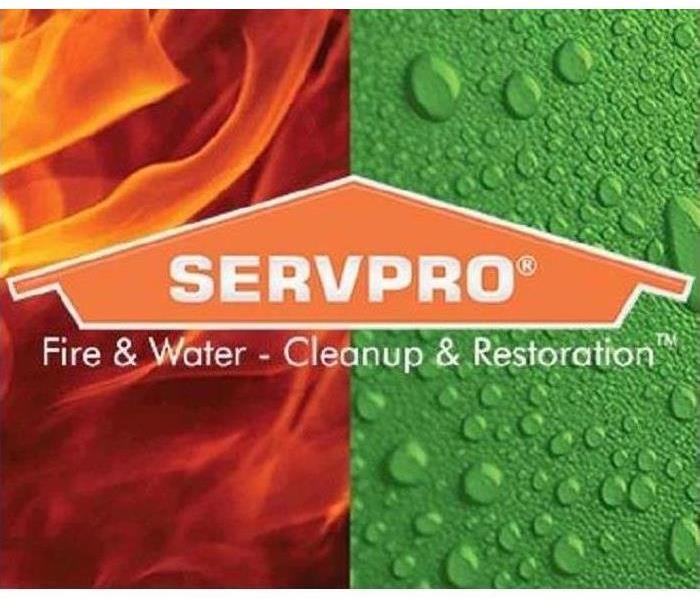 Call SERVPRO® of New Orleans Uptown & Mid- City at 504-468-3047
Call SERVPRO® of New Orleans Uptown & Mid- City at 504-468-3047
Be Safe with Water-Damaged Electronics & Appliances
Water damage can occur for many different reasons. Sometimes, it happens as the result of a flood due to heavy rains. Other times, it may be due to an inside flood, such as when a pipe or a water heater bursts. Whatever the case may be, if you are dealing with water damage or water-damaged electronics, appliances, or other devices, you need to proceed with extreme caution. The best thing you can do, after water damage has occurred, is to call SERVPRO® of New Orleans Uptown& Mid-City professionals who are familiar with dealing with such damage. In the meantime, make sure you practice some good safety tips with the water damaged devices.
First things first, before you start thinking about possible water damage restoration, you need to make sure that you are not in immediate danger and that the devices that you own are not going to cause a fire or another serious incident.
After water damage has occurred, check your home to see if you have any damaged devices plugged in. If you find that you do, shut off the electricity at the breaker level. This will keep damaged devices from being able to start a fire. You should not touch, go near, or inspect any devices that are plugged in until you are certain that the electricity is off. Following this important tip will help you to avoid electric shock.
Believe it or not, it is not only plugged in water damaged electronics that pose a risk. Any device that contains a battery can also pose a serious risk. Thus, it's best to let our pros at SERVPRO® of New Orleans Uptown & Mid-City handle any such devices if you think they may have been damaged. At the very least, before touching any battery operated device, ensure that it is not giving off heat or smoke, bulging, melting, or making strange sounds. All these types of things are major warning signs that something serious and potentially dangerous is wrong with the battery!
As you can see, you're not always in the clear once the water subsides! To keep safe, contact the experts at SERVPRO® of New Orleans Uptown & Mid-City before you do anything!
Leaky Windows?
1/9/2020 (Permalink)
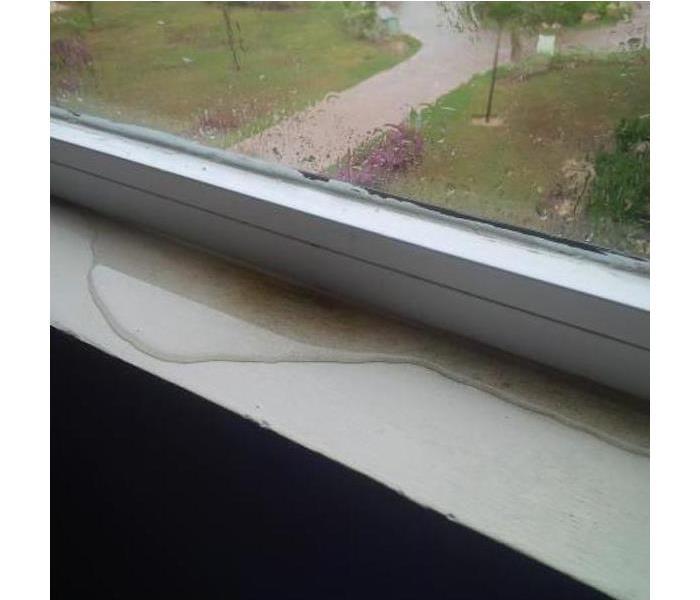 Leaky window? Call SERVPRO® of New Orleans Uptown & Mid-City to help!
Leaky window? Call SERVPRO® of New Orleans Uptown & Mid-City to help!
What to Do if There Is a Water Leak Around a Window
The natural elements can wear down the integrity of a home. Over time, the homeowner may notice leakage around a window, which can possibly result in wood rot, mold and water damage. The longer the leak is left unaddressed, the more the repairs will cost.
Locate the Problem
Even a slow drip can mean that more water is sitting inside of the wall. Once a homeowner notices moisture trickling from a window when it rains, the first step is to carefully look at the wall around the area to find the source of the leak. However, thanks to gravity, appearances can be deceiving; liquid may pool in one place, but that place is not always the leak's origin.
Two common problem areas are the edge and the rubber seal. The gap between the edge and the surrounding wall is usually sealed with caulk. Eventually, the caulk dries out and begins to peel and chip. Like caulk, the rubber seal situated between the panes and frame can ultimately dry out, creating rips in the rubber.
Gauge the Severity of Damage
Depending on the severity of the damage, the window may need to be replaced. A replacement is usually warranted when decaying or softness is found on nearby surfaces. However, even if the surrounding surfaces seem to be structurally sound, the homeowner should not just re-caulk the gaps without getting an expert's opinion on the full extent of the damage.
SERVPRO® of New Orleans Uptown & Mid-City Can Help
A specialist at SERVPRO® of New Orleans Uptown & Mid-City can determine whether any ceiling tiles or drywall have sustained damage. After he assesses the situation, the restoration technician will give the homeowner the best remediation option to make the damage disappear. By acting quickly, the homeowner can prevent expensive repairs in the future. SERVPRO® of New Orleans Uptown & Mid-City is always ready to help the residents of New Orleans and the city's surrounding communities solve their water damage problems.
Water Damage Strikes Fast, But So Do We!
1/8/2020 (Permalink)
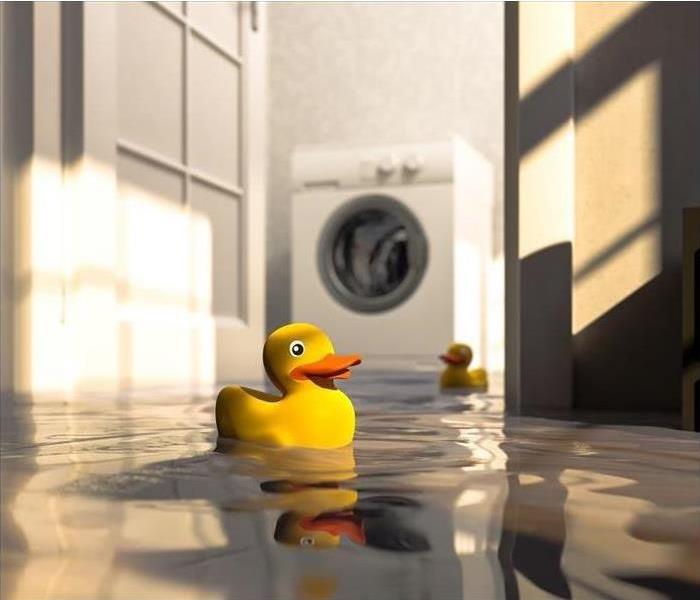 SERVPRO® of New Orleans Uptown & Mid-City makes removing standing water first priority when beginning the water damage restoration process.
SERVPRO® of New Orleans Uptown & Mid-City makes removing standing water first priority when beginning the water damage restoration process.
SERVPRO® of New Orleans Uptown & Mid-City Suggests to Contact Us Immediately Upon Discovering a Water Leak for Fast Mitigation
Sometimes water emergencies are splashy affairs, with dramatic breaks in water mains or flooding from appliances in your home. More frequently seemingly minor leaks or loose connections in plumbing slowly create severe water damage scenarios. The skilled water damage technicians on our crews know how to mitigate the loss no matter what the cause.
When plumbing fails in a residence, the resulting water damage can be a build up of days, weeks, or years of obscured drips or seepage. The compromised pipes and fixtures and the resultant damage may remain hidden for a time, but eventually, the harm done makes itself known. Drywall crumbles, flooring warps or buckles, and microbial growth can become evident. Our highly-qualified water damage restoration experts employ effective strategies mastered in IICRC courses to reverse and resolve the problems.
Assessment of the damage is the first task undertaken. Water can take unexpected paths, and SERVPRO® of New Orleans Uptown and Mid-City crews investigate the evidence observable thoroughly so that we address all the aspects of the incursions. If necessary, we remove sections of drywall or pull off the kick plates beneath cabinets to expose the damage. Our employees employ moisture meters and infrared scanning devices to scope out the area, including locating hidden caches of water that collected between walls, under floors, and above ceilings.
We operate powerful wet vacuums to extract the water puddled or soaked into porous furnishings like carpeting or upholstery. Then we use the moisture baselines measure by electronic meters to determine drying goals aimed at reducing moisture to normal levels in structural components and fixtures. SERVPRO® of New Orleans Uptown and Mid-City crew members position air movers and dehumidifiers to achieve the drying goals, adding heat to create the balance needed to move moisture out of saturated items.
Throughout the water damage mitigation process SERVPRO® of New Orleans Uptown and Mid-City technicians are on the lookout for secondary issues such as microbial growth. Water intrusions that exist more than 24 to 48 hours provide mold spores the fuel needed to grow and multiply into full-blown colonies, often hidden with the slow leaks.
Of course, we also arrange for repair or replacement of the plumbing fittings that were the source of the water damage. SERVPRO® of New Orleans Uptown and Mid-City recommends inspection of pipes on a regular basis to ensure no further water damage in your home.
SERVPRO® of New Orleans Uptown and Mid-City offers full-service water damage mitigation, including water removal and structural drying. Call us at: (504)-496-0193 as soon as the water incursion is noted for an experienced production team member to conduct an assessment.
Call SERVPRO® of New Orleans Uptown & Mid-City Immediately After A Water Loss
1/8/2020 (Permalink)
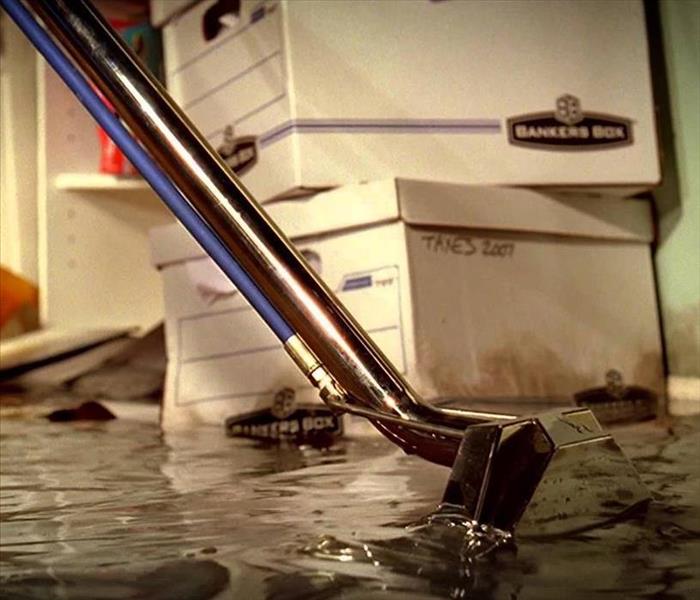 Call SERVPRO® of New Orleans Uptown & Mid-City for any help you may need. Our service line is always available day or night! 504-468-3047
Call SERVPRO® of New Orleans Uptown & Mid-City for any help you may need. Our service line is always available day or night! 504-468-3047
Water Damage in New Orleans Homes and Apartments Means Higher Humidity Levels
When a broken pipe happens inside your home, water coming out in a steady stream floods the area rapidly. Lost water like this can evaporate fast enough to cause other problems inside your home in New Orleans. High amounts of water vapor can lead to a range of issues, from microbial infestations to loosened wall coverings.
We help property owners stabilize their home's humidity levels, which can prevent water damage in New Orleans from developing. We use thermal imaging equipment to locate water leaks, trapped water, and areas with higher-than-normal amounts of moisture content. Our drying equipment includes pumps of different sizes, air movers, desiccant machines, and dehumidifiers. Air scrubbers also play a role in making your home secure again, "Like it never even happened."
Water damage that occurs after water loss events can happen anywhere inside the house. Water does not stay confined to only the area where the pipe broke. This is why we use thermal imaging equipment in looking for damaged areas that might remain undetected otherwise. Peeling paint on ceilings is more evident than mold hidden inside wall spaces and under cabinet bottoms. However, both need mitigation and cleanup work to keep your home healthy.
When homeowners call us immediately after an incident, we can extract the water and completely prevent water damage from spreading to other areas of the home. This process may seem highly intensive, but we must ensure that we extract the water as it spreads. Water travels to drier locations steadily, but extraction efforts can significantly slow this down.
Extracting water is only part of the work, and we set up the other machinery to ensure that water cannot settle in any location. Trapping it as either a liquid or as vapor in the air re-establishes dry conditions again. When a slow leak and not a broken pipe with sudden water loss caused the problem, we use similar methods. Either way, we restore dry conditions that protect your home from the effects of water damage.
SERVPRO® of New Orleans Uptown & Mid-City performs both preventative work against water damage and mitigation where current damage exists. Contact us for more information by calling (504) 468-3047.
Helping Make Water Damage "Like it never even happened."
1/7/2020 (Permalink)
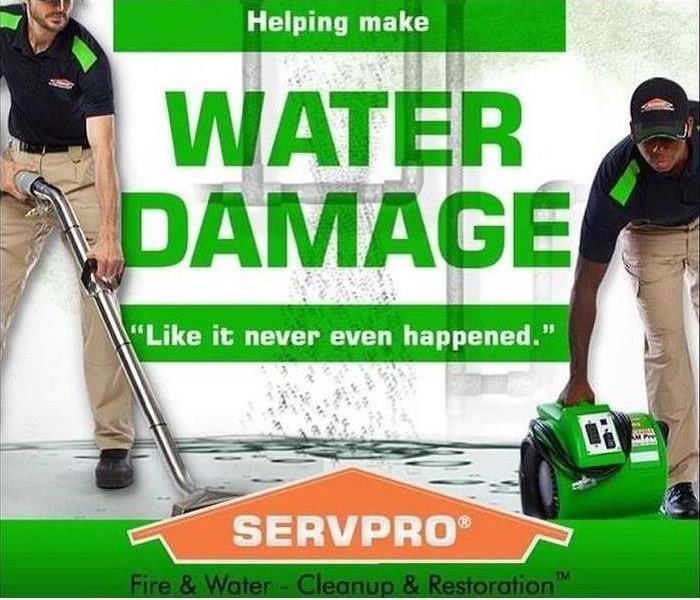 Don't panic! SERVPRO® of New Orleans Uptown & Mid-City can help! Call us at 504-468-3047
Don't panic! SERVPRO® of New Orleans Uptown & Mid-City can help! Call us at 504-468-3047
Louisiana is known for Mardi Gras, Crawfish, Alligators, jazz music, great food and an even better time. However, the first thing most people think of when they hear Louisiana is Hurricane Katrina and the flooding that accompanied her. Flooding is a fear many of our residents worry about constantly, but SERVPRO® of New Orleans Uptown & Mid-City is here to put our residents' mind at ease. We are here to help and serve our community that we are proud to be a part of. SERVPRO® of New Orleans Uptown & Mid-City is on-call, prepared to assist in any of your water damage needs 24/7. Our highly trained technicians are ready around the clock to quickly and properly restore your home or business. We use innovative inspection and extraction equipment to detect all of the water and remove it as quickly as possible. Our technicians will observe and document the drying process to ensure your property is back “Like it never even happened.”
WHAT TO DO AFTER FLOODING:
- Remove items off of furniture such as lamps, and tabletop décor, and wipe off excess water.
- Mop up excess water on the floor.
- Prop wet upholstery and cushions.
- Place aluminum foil or wood blocks between furniture legs and wet carpeting.
- Open any doors and windows that you can to encourage air flow and help to prevent mold growth.
- Remove colored rugs from wet carpeting.
WHAT NOT TO DO AFTER A FLOOD:
- Don't turn on ceiling fixtures if ceiling is wet, and keep out of rooms where ceilings are sagging.
- Don't use your household vacuum to remove water.
- Don't leave books, magazines or other colored items on wet carpet or floors.
Even though you may have removed all of the water, there may be moisture lurking within your floors, carpet and baseboards that you cannot see, and that’s where SERVPRO® of New Orleans Uptown & Mid-City can help! Please call us at 504-468-3047
Count On SERVPRO® of New Orleans Uptown & Mid-City If Your Home Gets Caught In A Flood
1/3/2020 (Permalink)
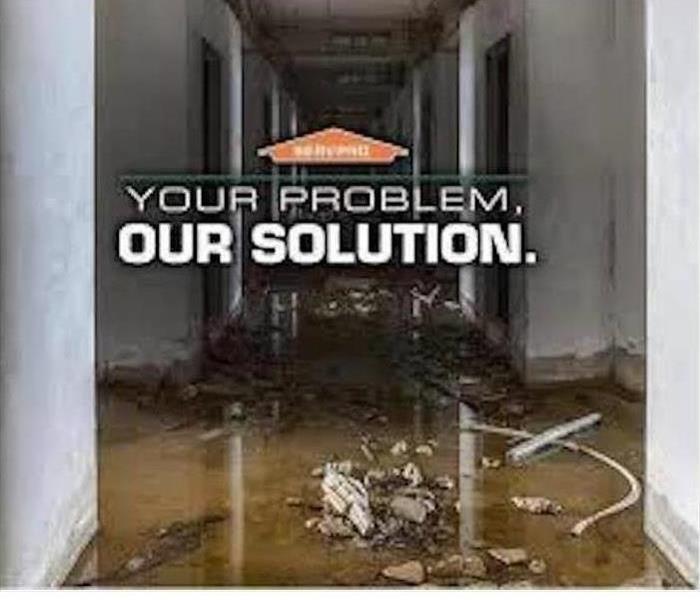 If you are dealing with water intrusion in your home, contact SERVPRO® of New Orleans Uptown & Mid-City 504-468-3047
If you are dealing with water intrusion in your home, contact SERVPRO® of New Orleans Uptown & Mid-City 504-468-3047
Put Your Mind At Ease and Call The Professionals at SERVPRO® of New Orleans Uptown & Mid-City
New Orleans floods, a lot. It is almost a normal part of our lives here, so cleaning up from water in our homes is a regular occurrence for residents and restoration services.
Performing a water cleanup in New Orleans takes much than just a large Water-Vac and a push broom, however. SERVPRO® teams have to identify the category of water that floods a home to determine the cleaning method and what precautions they need to take to keep our technicians and the homeowner safe.
Category One is Clean Water. It does not contain waste products. Burst pipes, leaking faucets, and some failing appliances are the usual sources of clean water. Natural disasters can damage roofs and expose homes to rain and snow. This category presents minimal health risks during removal and requires no special requirements for cleanup. If the water flowed over the soil before entering the home, however, it is not considered clean water. As a caveat, if rainwater intruding through the attic soaks through insulation and items, it is not clean water.
Category Two is Gray Water. It is water that was used but does not contain human waste. This category includes water from an overflowing washer that drops detergent-filled water on the floor. An overflowing toilet with no solid waste also is included in this category. Gray water is not a vector for spreading disease, but people can become sick by touching it, drinking it, or walking through it without protective footwear. Carpet soaked in gray water needs thorough cleaning for restoration and furniture needs to be sprayed or wiped down with an anti-bacterial cleaner.
Category Three is Black Water. This unsanitary water often contains human waste and presents a health threat to anyone who comes in contact with it. SERVPRO® technicians wear protective gear while removing it from each home. Before starting removal, our teams also spray the surfaces with anti-bacterial and anti-fungal cleaners to reduce the risk. They treat all floodwater as black water since it is impossible to know what it traveled through before it entered a home. Team leaders dispose of carpets soaked in Black Water and only recommend attempting to clean high-value rugs since technicians can lift them from the floor and soaked them in a biocide solution that kills all living organisms.
If you have any concerns or experience water damage yourself call us at 504-468-3047




 24/7 Emergency Service
24/7 Emergency Service


